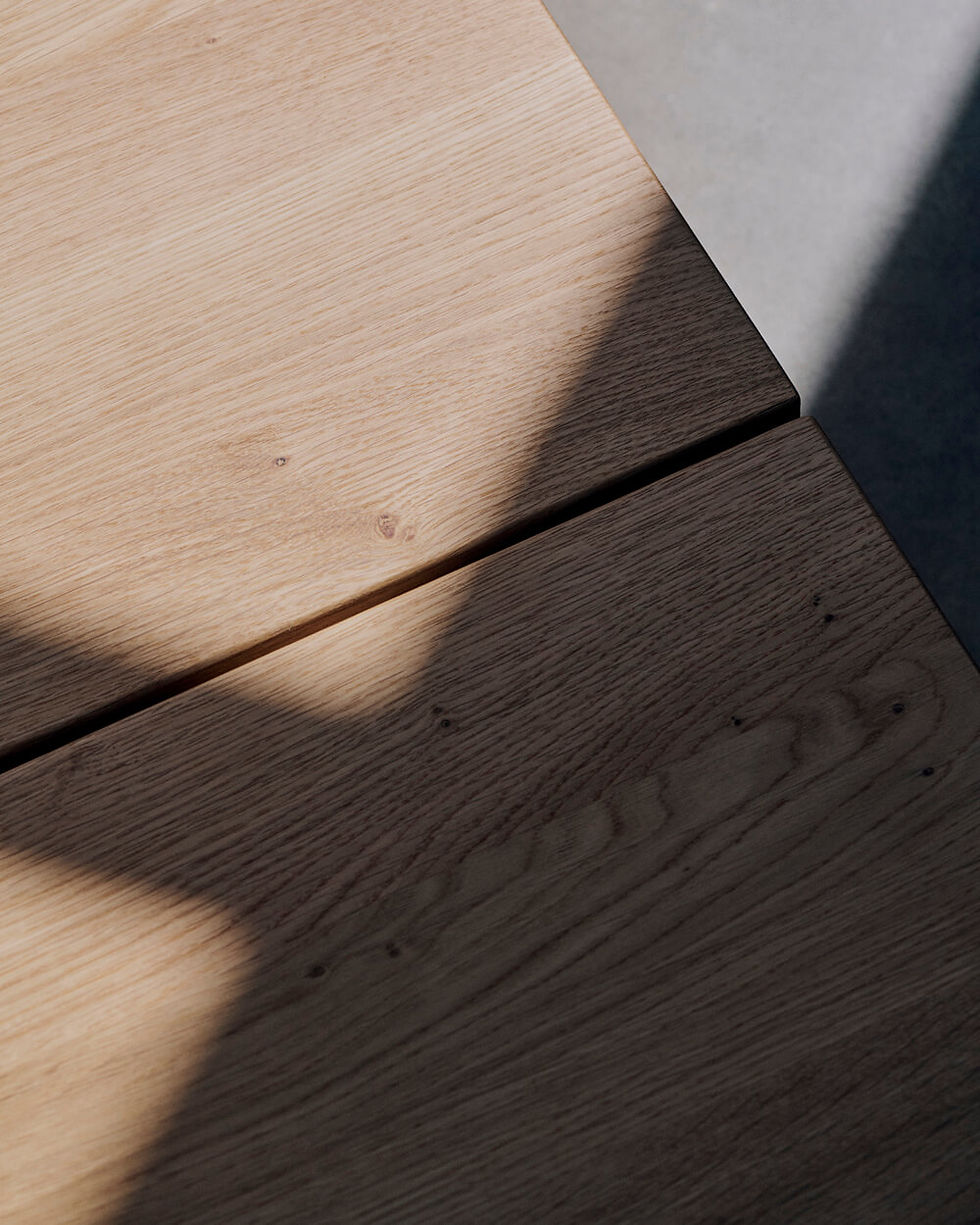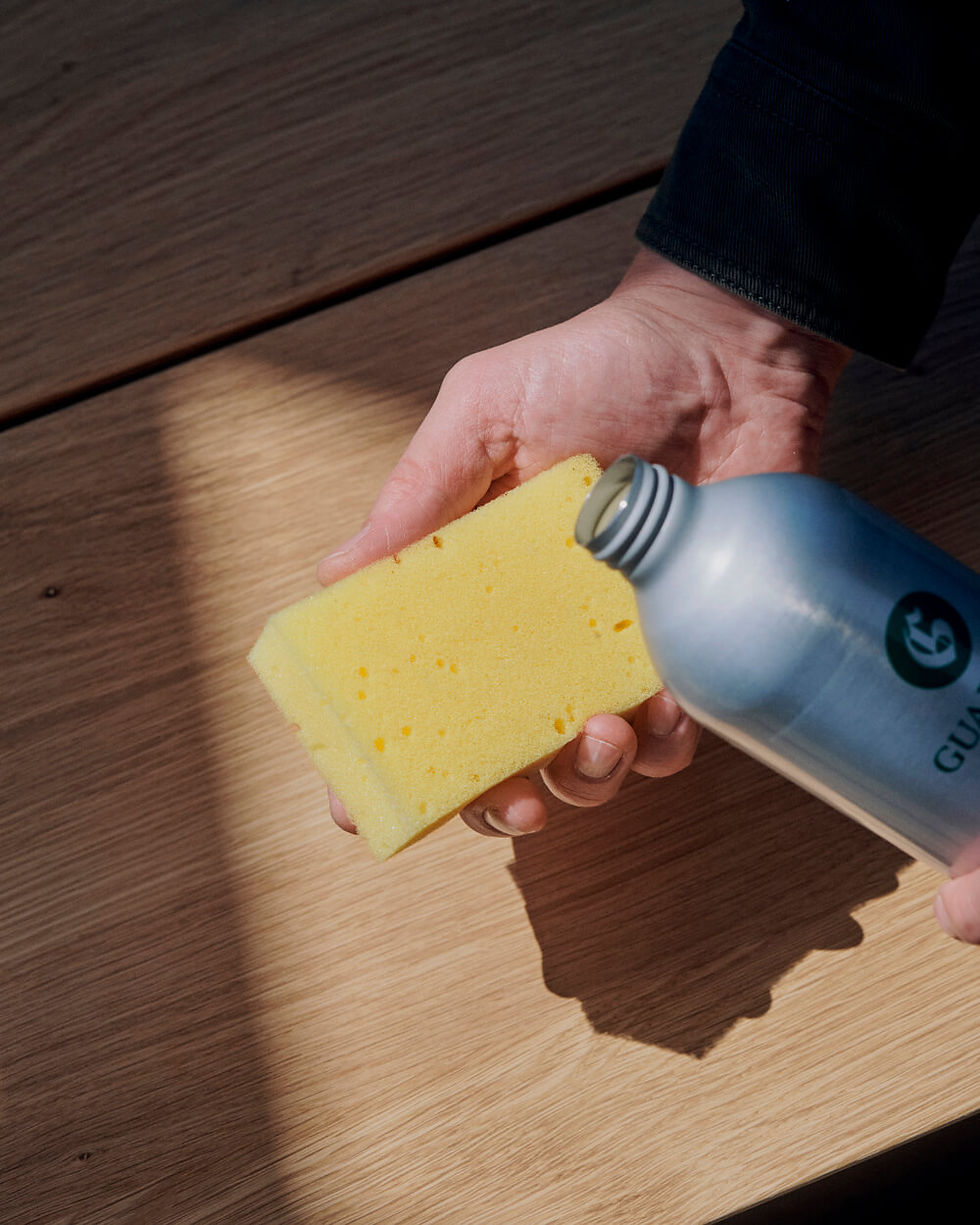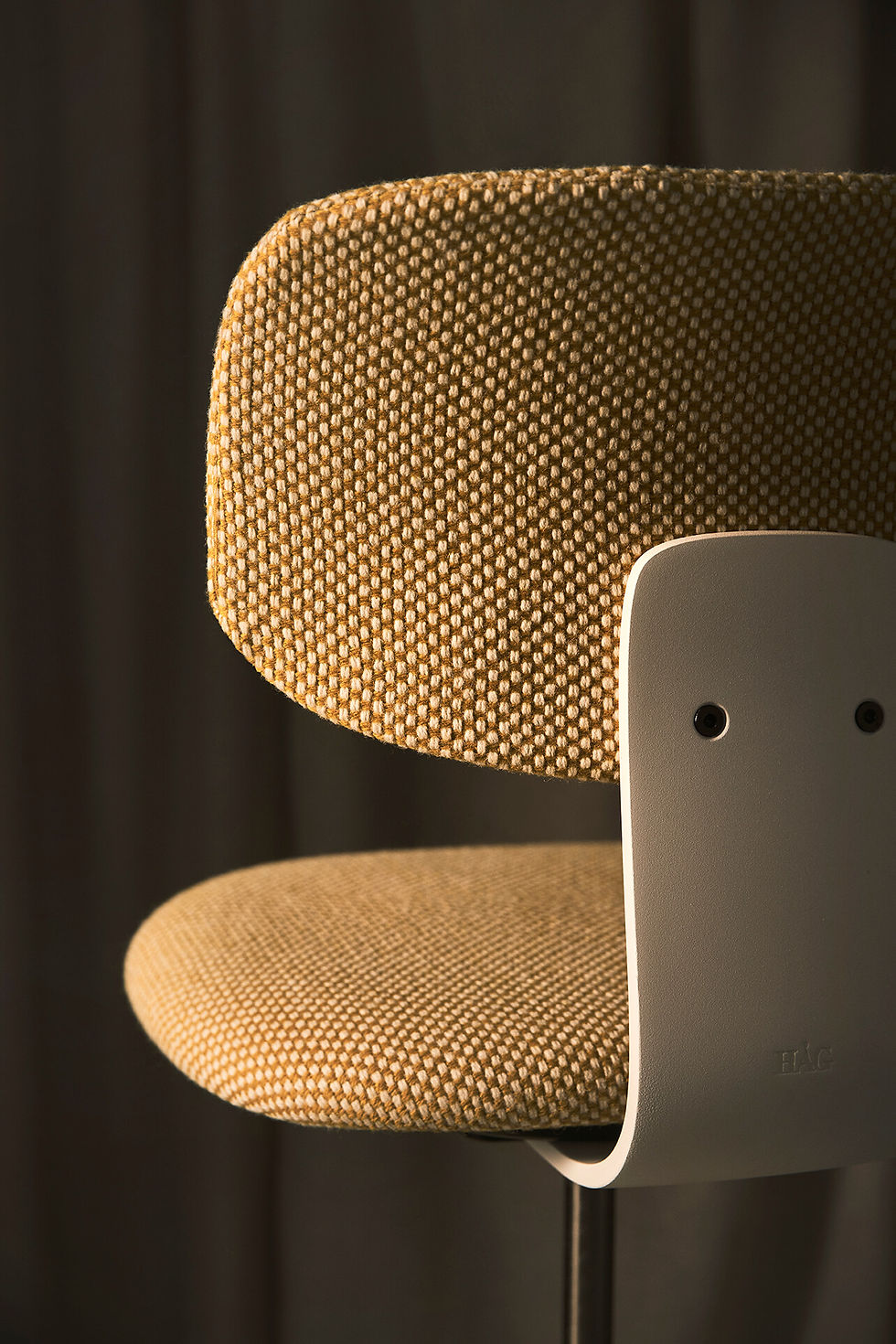Care and Maintenance
By investing time in proper care and maintenance, you can extend the lifespan of your furniture and products and preserve its beauty and functionality for many years to come.




Wood
Wood is a unique and living natural material. Veins and knots are part of the wood’s nature, and no two wooden furniture units are the same.
Wood is constantly changing, which means that its colour and structure will change throughout your wooden furniture’s lifetime. Many types of wood will change colour over time. The colour changes will be most significant – the most visible – at the beginning, and therefore it is a good idea to let your wooden furniture (surfaces) remain unexposed, without any vases, trinkets, etc., in the first few months.
Solid wood is defined by humidity. During the summer season, the wood expands, and hence, tabletops may slightly arch. During the winter season, the wood retracts again. When the wood works – expands and retracts – “weather cracks” (small cracks between the wood grains) may appear. However, they are harmless and can often be “treated away”.
Wooden furniture should be cared for with either oil or soap 3-4 times a year.
See our products for the care and maintenance of indoor wooden furniture
-
Daily cleaning is done with a hard-wrung cloth.
-
If there are difficult spots, Guardian Wood Cleaner is recommended.
-
If the wood "rises” (stays), lightly polish it with fine sandpaper – never steel wool!
-
Always treat, clean, or polish in the grain direction of the wood.
-
Avoid placing hot or moist things on the wood, as it may cause blotches.
-
Location near intense heat sources (wood-burning stoves and radiators) may affect the wood and cause it to “warp” more than naturally.
-
Wood should never be covered permanently with airtight materials (wax cloth) for longer periods.
-
When treating tabletops, both sides should be treated.
-
If in doubt, ask your furniture dealer for advice.
-

Leather
Leather is an excellent choice for upholstered furniture. Unlike fabric, leather often becomes more beautiful with age (patina) if you ensure that the leather is properly cared for.
There are several types of leather, each with its advantages and disadvantages.
The "smooth" leather types:
-
Aniline leather is natural leather with aniline dye, which has no surface protection. It is very soft, highly breathable, and comfortable to sit in. Aniline leather patinas quickly and is susceptible to stains, as well as fading due to exposure to light.
-
Semi-aniline leather is very similar to aniline leather, but has a thin surface treatment and is slightly more resistant, less susceptible to stains, and offers better protection against fading than aniline leather.
-
Pigmented leather has a strong surface protection and is more resistant to stains and fading. Pigmented leather is not as soft and does not have the same breathability as aniline and semi-aniline leather
Guardian Leather Cleaner and Guardian Leather Conditioner are recommended for aniline, semi-aniline, and pigmented leather, helping to preserve the natural properties and appearance of the leather. Regular care with Guardian Leather Cleaner and Guardian Leather Conditioner (4-6 times a year) significantly reduces the risk of drying, scratching, and fading.
For the protection of nubuck, suede, buffed leather, and other types of "rough" leather, Guardian Leather Protector is recommended.
See our products for the care and maintenance of leather furniture
-
Avoid placing leather furniture directly next to heat sources, as this will dry out and bleach the leather. The distance should be at least 30 cm.
-
Protect the leather from direct sunlight, as it increases the risk of fading.
-
Vacuum your leather furniture regularly without scratching. The leather pores do not benefit from dust accumulating.
-
If spilled on the leather, immediately blot up the spill with a soft absorbent cloth. Never rub!
-
Never use sulfur, gasoline, or other strong chemicals on your leather furniture, as this will do more harm than good.
-
Linoleum
Linoleum
Linoleum is a 100% natural product made of raw materials extracted from plants and trees and has the advantage, besides noise reduction, of being easy to clean and resistant to greasy fingers, if cared for properly. Linoleum, like other materials, will patina when used and develop a rich, natural look over time.
Linoleum does not tolerate grease-cutting cleaning products such as Sulfo, Ajax, and similar. Also, linoleum does not tolerate excessive heat – therefore, do not place hot things directly on your linoleum table.
For daily cleaning, wipe with a soft lint-free cloth wrung in clean, possibly lukewarm water – never use paper towels or sulfo-like products!
For thorough cleaning, Guardian Linoleum Soap is recommended, which both cleans and protects the linoleum surface. Remember always to treat all surfaces. Guardian Linoleum Soap may be used advantageously 3-4 times a year.


Laminate
Laminate is a hard-wearing and easy-to-clean material and normally does not require any special maintenance. Daily cleaning is done with a clean, lint-free, soft cloth wrung in lukewarm clean water.
If more thorough cleaning is needed, the attached Guardian Laminate Cleaner is recommended.
Guardian Laminate Cleaner can be used for cleaning all types of laminate surfaces. It cleans the surface, degreases, and removes many spots. Spray a thin layer onto the subject at a distance of approximately 25 cm .from the surface, and then polish with a soft, lint-free cloth – never use kitchen roll. On rough or uneven surfaces, use a soft brush.
-
Red wine, ink, beetroot juice, fruit juice, and similar may cause discoloration and should therefore be removed as quickly as possible.
-
It is not recommended to use aggressive cleaning products (acetone, benzene cleaner, and similar).
-
Pencil lines are easiest to remove with an eraser.
-
It is not recommended to use scouring powder, steel wool, or other grinding cleaning products, as they may scratch the surface.
-
To protect the surface from hot, moist, colored, or sharp objects, trivets are always recommended.
-

Preserving the beauty of your furniture and products made of textile.
Textiles play a vital role in our everyday lives, adorning our homes with comfort and style. From cozy sofas to elegant curtains, these fabric treasures deserve our attention and care to maintain their beauty and functionality for years to come. Here are some essential tips for caring for and protecting your textile furniture and products, including the use of textile impregnate spray:
Regular maintenance: incorporate regular maintenance into your routine to keep your textile items looking their best. Vacuum upholstery surfaces and rugs regularly to remove dust, dirt, and debris that can accumulate over time. For curtains and drapes, gently shake or brush them to prevent dust buildup.